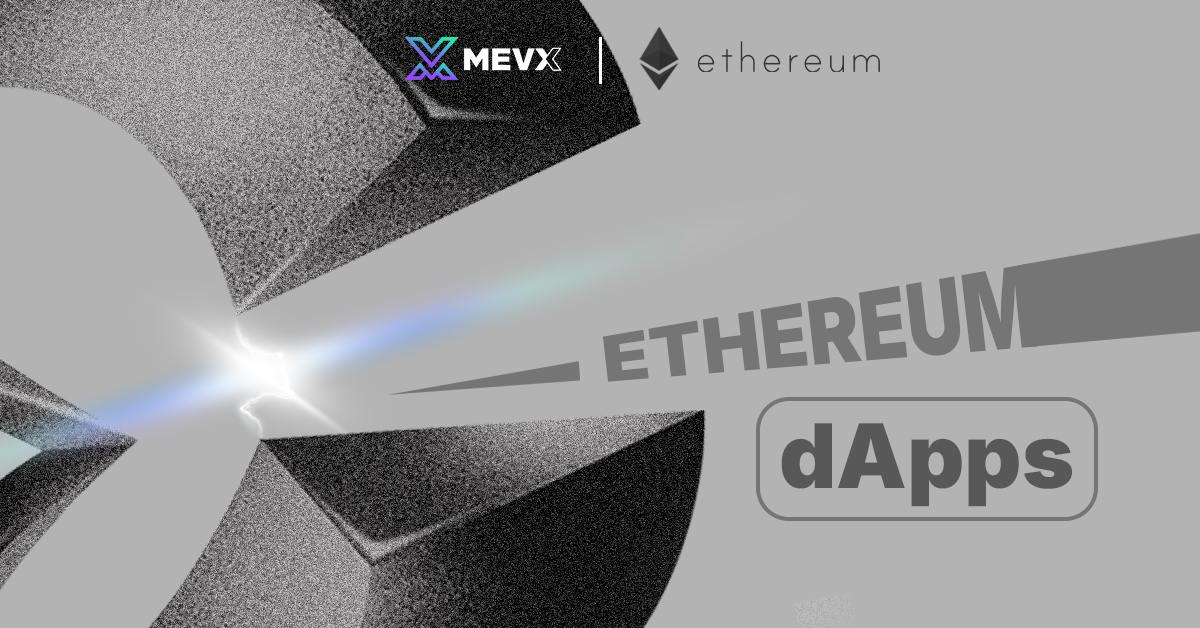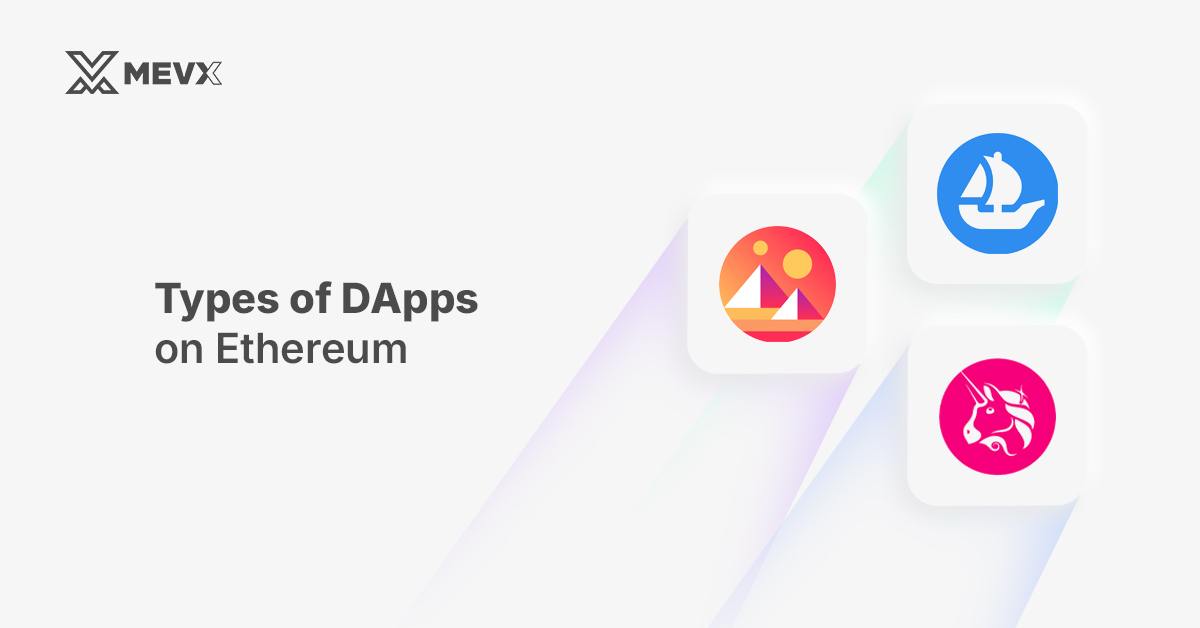Main Takeaways
- This article aims to provide knowledge on Ethereum’s dApps.
- It discusses why Ethereum is an ideal blockchain for dApps and how to interact with dApps.
- Some examples of dApps on Ethereum are also listed.

A guide to Ethereum’s dApps
Decentralized applications have now created whole new and revolutionary ways of using blockchain networks. Unlike typical applications, dApps do not depend on any central server. These applications run on a decentralized network of thousands of nodes, thus helping to increase transparency and security by getting rid of the middlemen.
1. What is DApp?
Applications developed on blockchain networks don’t run on a single centralized server like traditional apps. While most other applications are dependent on a central authority, dApps, or decentralized applications, don’t rely on a single entity as they work on a peer-to-peer network of nodes.
Most of the dApps are built on smart contracts meant for carrying out agreements with no intermediaries interfering. This makes dApps transparent, censor-resistant, and safe, allowing users to be in full control of their data and assets. Eventually, dApps aim to grant a higher level of privacy and security.
2. Why Ethereum for DApps?
In particular, Ethereum is designed for dApps and smart contracts. As a matter of fact, it becomes a developer’s number one choice. Some of the leading reasons for choosing Ethereum include:
- Smart Contract Capability: Ethereum was designed to support smart contract usage that would be programmable in nature for self-execution upon meeting set conditions.
- Robust Ecosystem: Ethereum currently is the most-used blockchain for dApps, with an established developer community, detailed documentation, and a general wealth of resources for project development.
- Network Security: A high number of nodes and validators creates a very secure, attack-resistant network.
3. How Do DApps Work on Ethereum?
DApps operate on Ethereum, enabled by smart contracts. Basically, these are self-executing contracts that will respond to predefined conditions and perform certain kinds of transactions or actions. Here is a basic breakdown of how dApps work with the Ethereum blockchain:
- Smart Contract Deployment: The developers must deploy smart contracts on the Ethereum blockchain first. These contracts are written in Solidity, the coding language of Ethereum.
- Smart Contract Interaction: When users interact with dApps, they trigger various functionalities of smart contracts. For instance, when one user sends an ETH to a dApp for lending, that user triggers a lend smart contract that initiates the process of borrowing.
- Transaction and Gas Fee: Every time there is any interaction between dApps, some blockchain transactions are involved. To have these transactions processed, an amount of ETH is paid as gas fees. These gas fees are used to compensate validators and cover the computational cost incurred.
Data Storage: Ethereum is a public blockchain; therefore, any activities on dApps are recorded in the blockchain.
4. Types of DApps on Ethereum

Ethereum serves a broad range of dApps in many industries for multiple purposes. The most common categories include:
DeFi
DeFi covers all the decentralized financial applications, replicating traditional financial services for lending and borrowing but eliminating the role of middlemen. Some prominent DeFi dApps on Ethereum are:
- Lido: Lido is a famous liquid staking dApps that allows users to stake ETH in exchange for stETH, meaning users can earn interest while having tokens to perform transactions. With a TVL (total value locked) of $24.569 billion, Lido is currently the top 1 DeFi dApp on Ethereum.
- Uniswap: This is a DEX (decentralized exchange) that allows users to swap tokens on the Ethereum blockchain. This dApp is the most famous DEX for Ethereum, with $3.841 billion value locked.
NFT Marketplaces
This group involves the creation, purchase, sale, and trading of unique art pieces in digital form.
- OpenSea: Open Sea is the former best NFT marketplace for Ethereum, enabling buying, selling, and trading NFTs. It functions much like well-known e-commerce platforms such as eBay or Etsy, but in a decentralized way.
- Blur: Blur boosts liquidity by integrating with multiple marketplaces. The zero transaction fee of this dApp is also an appealing key point. Blur is currently Ethereum’s top marketplace.
Gaming and Metaverse
This is the most popular use case of Ethereum-based dApps. These dApps allow users to own in-game assets and even socially interact within these virtual worlds.
- The Sandbox: The Sandbox is a 3D pixel game that combines elements of gaming, creativity, and blockchain technology to create a user-generated metaverse. All assets, including virtual land and in-game items, are NFTs.
- Decentraland: This project is an Ethereum-based 3D virtual world game. If you know VRChat, you might find this game familiar. Users can create and sell clothes and accessories in this virtual world.
5. Ethereum-based DApps in Action
To get started with dApps of Ethereum, a few basic tools are necessary.
- Ethereum Wallet: You’ll need to have a Web3-enabled wallet, like MetaMask. It will allow you to interact with Ethereum dApps. Fill it up with some ETH to perform transactions and cover the gas fees.
- DApp Access: Go on to dApp aggregating platforms, like DappRadar or the Ethereum App Directory, to get a peek at what is around.
- Interacting with Smart Contracts: Every time you interact with a dApp, you will create a new transaction. Your wallet will require you to confirm the action and pay the gas.
- Security at Forefront: Always use well-known dApps, always double check in transactions the details, and be wary about phishing attempts.
6. Conclusion
Ethereum has grown to be one of the more prevalent blockchains for decentralized applications with advanced smart contract capability, an established dApps ecosystem, and security. Ethereum dApps are creating new blockchain use cases, everything from financial services to digital art. With this ever-growing ecosystem of dApps, the possibility of decentralized interaction will continue to expand, thus enabling a more open, innovative digital world.
Share on Social Media:
